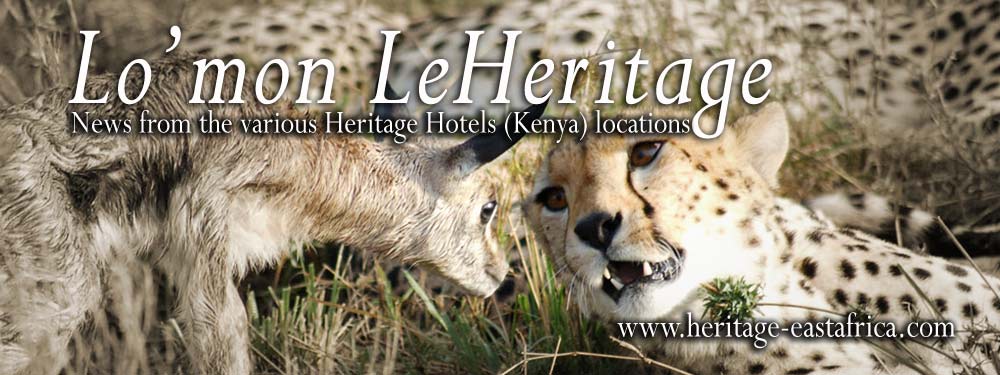With the exit of the wildebeests from the Mara, we shall keep you abreast of with how the Big Cats in the Mara cope through the lean period till the herbivores return next year. Our updates will also focus on the cats and other interesting sightings across our units as reported from our field staff.
We have had two weeks of life-bringing rain in the Mara from the beginning of the month, which is quickly grassing the plains with a fresh carpet of lush green shoots.
 The herbivores are now congregating into small herds in areas that are dryer, normally for two reasons: to avoid fungal infection in their hooves and maximize their vigilance of the predators.
The herbivores are now congregating into small herds in areas that are dryer, normally for two reasons: to avoid fungal infection in their hooves and maximize their vigilance of the predators.There were active river crossings at paradise at the beginning of the month just before the rains, with many zebra from the Loita migration were crossing from the Mara triangle heading east to the Loita plains. Almost all the migrating herds have now left the Mara. There are only a handful of zebra and wildebeest from the Loita herds still on the edge of the park to the east.
Big Cats:
The Mara big cats are now adjusting to the sudden decrease in the food supply following the departure of the migrating herds. They will now have to go for long periods without food., which is normal for them, except that the wildebeests left very abruptly this year, giving them little time to adapt.
All our lion prides - Marsh, Ridge and Olkiombo - are still holding their territories, even though they are now becoming more mobile as they look for food. Hunting at this time requires energy and well executed hunting strategies since the remnant animals are few and much more vigilant, and the plains are yet to be fully grassed.
Shakira, our female cheetah star has now moved to the area near Mara Intrepids where she has been for the last one month. This place has proved convenient for her to bring up the cubs as she has little harassment from hyaenas when she makes a kill. She has been making kills here regularly and the cubs are doing well.
Olive, the female leopard and her cubs Ayah, Binti and Kali are still in their usual area at the confluence of the Talek and Olare-Orok Rivers. Binti keeps more to herself, while the others stay together.

Bella is now better in health than in October when she was frail and sickly. She come to Mara Explorer on 12th November and stayed for two hours from 7.00 am in front of the restaurant, drinking and even trying to hunt some of the resident waterbucks. Ironically, this was unfolding when our guests were out on an early game drive - looking for leopards! The only two guests present, Stephen and Heather from England, who did not go the drive enjoyed the sighting all to themselves! This was a nice send off for them as they were leaving that morning.
Paul Kirui. Chief Safari Guide
Kindly contact: safariguide@mara-intrepids.co.ke for comments or inquiry on the migration and other animal sightings in the Mara
Map%20Issue%201.jpg
